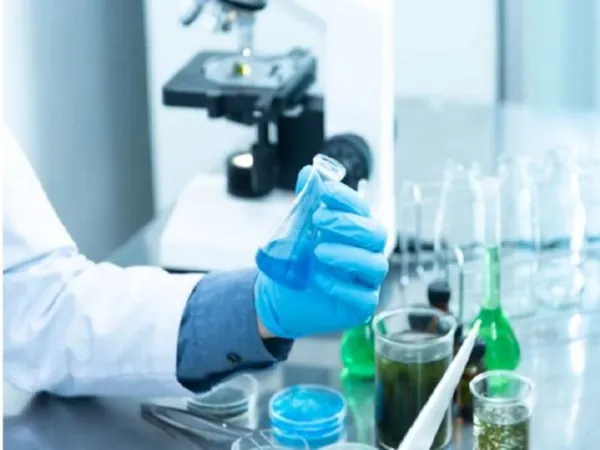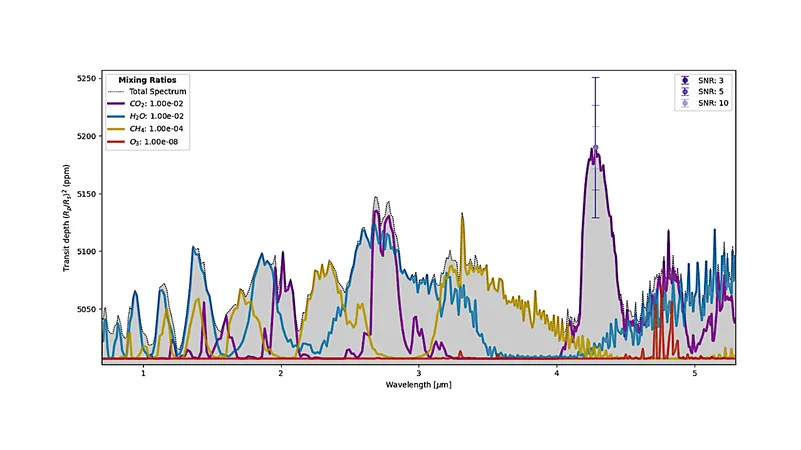
Revolutionizing Endotoxin Testing: The Battle Between Horseshoe Crabs and Synthetic Solutions
2025-03-31
Author: John Tan
Introduction
In a groundbreaking episode of *C&EN Uncovered*, host Craig Bettenhausen delves into a significant topic: the shift from using horseshoe crab blood for pharmaceutical endotoxin testing to synthetic alternatives. Joined by C&EN assistant editor Laurel Oldach, they discuss the ecological implications of this transition as well as the complex regulatory landscape faced by the pharmaceutical industry.
Horseshoe Crabs: A Keystone Species
Horseshoe crabs, often referred to as 'living fossils', have played a crucial role in the medical world for decades. Their unique blue blood contains a substance used to detect bacterial toxins, essential for ensuring the safety of injectable drugs. However, escalating concerns from environmental activists and scientists have sparked a debate on the sustainability of continuing to harvest this resource as the demand for endotoxin testing grows with the rise of biological drugs.
Ethical and Environmental Concerns
Oldach explains that horseshoe crabs are a 'keystone species,' pivotal to their ecosystems. The harvesting process raises ethical questions regarding their survival rate post-extraction, with estimates of mortality ranging widely. Meanwhile, some regions around the world classify horseshoe crabs as endangered, making access to their blood increasingly difficult. This shortage propels the push towards synthetic endotoxin testing methods, which advocates claim are more reliable and environmentally friendly.
Historical Context and Current Practices
The discovery of utilizing horseshoe crab blood for endotoxin testing dates back to the 1960s when a researcher noted its impressive ability to clot in the presence of bacteria. This property has proven invaluable for the pharmaceutical industry, which previously relied on animal testing for safety assessments but is gradually shifting towards more humane and sustainable practices.
Regulatory Challenges
However, the introduction of synthetic alternatives presents significant regulatory challenges. The current regulatory framework treats horseshoe crab-derived tests as biologically distinct from synthetic versions. This disparity creates a hurdle for manufacturers attempting to gain approval for synthetic tests despite their potential to eliminate the reliance on wildlife. The debate intensified when a microbiology committee for the US Pharmacopeia faced scrutiny, leading to significant discord over the regulatory treatment of these tests.
Future Implications
The implications of this transition are considerable. Even if pharmaceutical companies and regulatory bodies decide to shift towards recombinant assays for future drugs, existing products still necessitate the conventional horseshoe crab-based testing. With drug approvals tied to particular testing protocols, the demand for horseshoe crab blood may endure for years to come.
Conclusion and Call to Action
What lies ahead for horseshoe crab-derived tests in the pharmaceutical landscape? As environmentalists prepare to hold companies accountable for their ecological footprint and as the regulatory landscape evolves, the future may be skewed towards synthetic solutions. However, the complexities of transitioning current regulations could take decades to resolve, leaving the controversy open for continued dialogue and involvement from all stakeholders in medicine, environmental conservation, and regulatory authority.
Stay tuned as this critical issue develops, shaping the intersection of healthcare and environmental sustainability. Whether you are a pharmaceutical professional, an environmental advocate, or simply intrigued by science, this is a story that impacts us all. Let's dive deeper into this evolving narrative that could redefine endotoxin testing in the medical field forever! For an in-depth exploration of this topic, check out Laurel Oldach’s full story on C&EN’s website and join the conversation on how we can balance pharmaceutical innovation with ecological responsibility.





 Brasil (PT)
Brasil (PT)
 Canada (EN)
Canada (EN)
 Chile (ES)
Chile (ES)
 Česko (CS)
Česko (CS)
 대한민국 (KO)
대한민국 (KO)
 España (ES)
España (ES)
 France (FR)
France (FR)
 Hong Kong (EN)
Hong Kong (EN)
 Italia (IT)
Italia (IT)
 日本 (JA)
日本 (JA)
 Magyarország (HU)
Magyarország (HU)
 Norge (NO)
Norge (NO)
 Polska (PL)
Polska (PL)
 Schweiz (DE)
Schweiz (DE)
 Singapore (EN)
Singapore (EN)
 Sverige (SV)
Sverige (SV)
 Suomi (FI)
Suomi (FI)
 Türkiye (TR)
Türkiye (TR)
 الإمارات العربية المتحدة (AR)
الإمارات العربية المتحدة (AR)